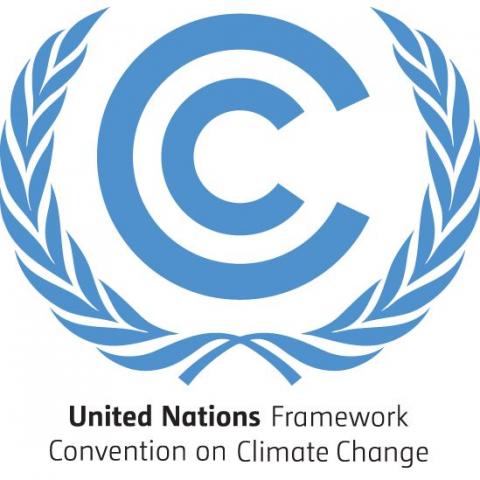It's Climate Week at the UN

This week has been Climate Week at the United Nations in New York. Part of the General Assembly meeting, Climate Week saw both China and the United States, the world's two largest CO2 and related emissions producers, issue significant statements related to climate-change abatement.
China's commitment to stop funding coal-fired power plants outside its borders ducked the important question of how much more coal it is planning to burn domestically.
The US commitment from the Biden Administration is to provide US$11.4 billion to developing nations for new sustainable energy still does not seem to fulfill the general commitment by developed nations to provide $100 billion in this type of funding, according to terms of The Paris Agreement of 2015. But it was a welcome-back moment for a country that cared nothing for global issues or cooperation under the previous administration.
Our work here at the Climate 4.0 initiative and with Tau Global Research has some interesting relevance to these two big announcements this week in New York.
Regarding China
China is the world's largest producer of CO2 and related emissions. Now sailing towards 14 billion tons of CO2 equivalent, it not only exceeds the US output, it has more than doubled it.
China's own need to develop more energy may seem like a non-issue. Why? We use a formula that calculates the cost of bringing developing nations from the current 2-5% per capita electricity consumption compared to the developed world up to both 25% and 40% of the developed-world standard. China is already at 70% of this standard, and has vaulted its per capita income to around the world average (comparable to Malaysia).
But we don't know what China has in mind for the future. The size of its overall economy size is now second in the world, trailing only the US. Its economy is about two-thirds the size of the US economy, and will exceed it by 2030 if the two countries' respective average growth rates of the past 20 years continue.
Will this be enough? Perhaps not. If China is trying to replicate the size and composition of a developed-world economy – say that of the US – then its future electricity needs may appear insatiable. Its commitment to the UN this week may indeed be a red herring, disguising its intention to build significant new coal- and oil-fired power in its march toward world economic leadership.
How Much is $100 Billion, Really?
We've looked at energy consumption and needs for 144 countries for which we have credible data. As noted above, we can calculate the cost to bring developing nations up to a reasonable percentage of the developed-world standard.
From our research, we think the $100 billion figure from the Paris Agreement represents only about 20% of the cost to bring the developing world up to speed. Not to dismiss it or the commitment by the US this week.
But our figures show a need of $520 billion to bring the developing world up to 25% per capita power of the developed world, and more than $1 trillion to bring it up to 40%.
Worse, our figures do not include India (the world's 3rd-largest emissions producer), which is so large and still so undeveloped that it creates significant gravity of its own. (We see a need for $150 billion to bring India up to 25% and $450 billion to 40%.)
These totals, not including India, comprise between 13% and 25% of the entire GDP of these developing nations. (India's figures represent 5% to 15% of its current economy).
Daunting as these figures are, they still represent a very small slice of the world's overall economy. The $100 billion mentioned in the Paris Agreement is, in fact, only about 0.13% of the global economy. Even the $1.5 trillion or so required to bring the developing world, including India, up to 40% of the developed-world standard represents less than 2% of the world economy.
We have the money.
The Big Picture
Our figures do not include the costs of decommissioning existing plants, or the cost of the infrastructure (roads, buildings, utilities) and other costs to develop economies commensurate to meet the massive new supplies of electricity contained within our numbers. It's easy enough to see there are several more trillions in the equation.
This sort of investment is not philanthropy, though. Building new resources on this scale, and the economies related to them, would create new markets for all countries, and more efficient economies that could move away from the brutal, low-end manufacturing base that has infiltrated much of the developing world in recent years.
Yes, somebody has to make the shoes, electronics, air conditioners, and bric-a-brac needed by the globe's 7.5 billion people – but it should not require human exploitation to do this. We could assemble 20 leading economists to give us at least 20 different approaches to address this situation.
Keep Pushing
It's good and well that there has been enough cooperation to create the $100 billion commitment of the Paris Agreement, and continuing progress by the two big global powers at this week's UN meetings. There are any number of organizations, and now, large companies, working the problems of climate-change abatement.
It is also unrealistic to expect enough cooperation – including less corrupt, earnest cooperation from developing-world governments – to build sustainable economies on the scale our research envisions. But we should continue to push right up to the edge of being frantic to address climate change.
The earth is an impassive, disinterested observer in the consequences of climate change. It's seen catastrophic change and mass extinction more than once, and operates on geological time. We, on the other hand, operate in human timeframes and must view this week's UN announcements as the absolute minimum we should be doing and are able to do.